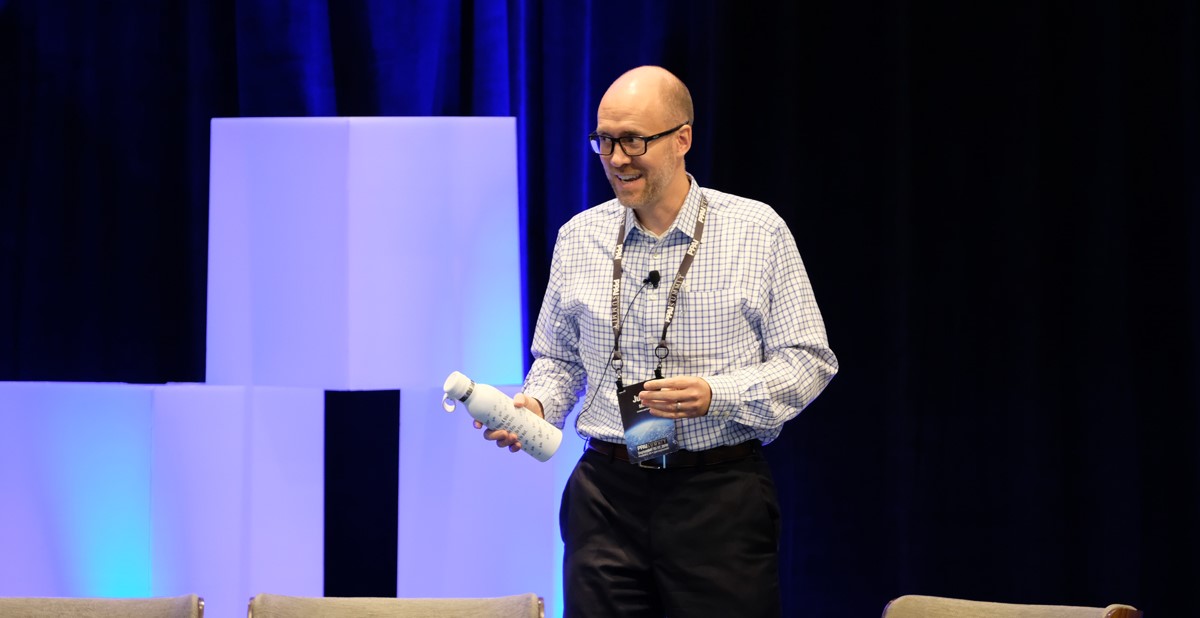PPAI’s Product Responsibility Summit Examines IP And How To Protect It
Intellectual property: what is it and how do you protect it? Justin Miller, Esq., a patent attorney with Larson & Larson, used his entertaining presentation style laced with unexpected humor to answer those questions and help listeners better understand this complex topic in this morning’s opening session at the PPAI Product Responsibility Summit in Alexandria, Virginia.
Intellectual property, as Miller explained, is a negative property right. The need to protect it isn’t called into play until someone infringes on your property. Among the things you can protect are words and phrases, shapes (for example, the iconic Coke bottle), logos (an arrangement of graphics and/or words), function (a mint container or earbuds) and creative works (the theme from Star Wars).
There are several ways to legally protect these entities including a design or utility patent, a trademark or copyright. Miller recommended to file a patent application before public disclosure. “If you wait to file, you may waive your rights or limit the remedies,” he said, citing the recent case of S’well vs supplier ETS Express, which involved the shape of a water bottle. The case was ultimately resolved in favor of ETS after a long legal battle.
He also advised listeners to remain vigilant about protecting their property. “Mark your patented products, trademarked names, logos and phrases, monitor the activity of others and enforce these patents strategically. To do this, keep an eye on the market.” In determining where to focus time and money on IP protection, he suggested looking at the level of risk. Where did the item come from? Did you see it at a trade show? Are competitors selling a similar item?
If you are adding an item to an existing product line, consider if the new item has a unique look or feature. Does it appear similar to a popular consumer product? If it has a function, it might be protected by a utility function.
“Be careful when using a famous design because it’s likely protected or the owner will enforce it even without protection,” he said, citing Yeti, a company he described as very aggressive on litigation.
Miller also talked about how to determine if you need the advice of legal counsel. If it’s high risk and high reward, seek counsel. If it’s high risk and low reward, you can likely skip this step and if it’s low risk and high reward you also may not need input. “Counsel has a cost,” he said. “Know your risk tolerance—what is the attitude of your business? Conservative? Then focus on established items. If you are a risk-taker, you can go for trendy items.
“Much of the search work for existing patents and trademarks can be done on your own, if you choose. It takes time, is a lot of work and complex,” he said, “but it’s hard to interpret what you find. At this point you’ll likely need the help of counsel to interpret the results.”
Miller also talked briefly on the landmines distributors should watch out for in terms of intellectual property.
“Be careful what you order for your clients,” he said. When accepting an order, he advised to avoid the obvious such as Disney, Star Wars, Marvel characters and the like, as well as famous landmarks, slogans, logos, likenesses of famous people, and photos and art of unknown origin.
“Fifty years ago, when you went to buy toothpaste, there was red and blue. Today, there are a lot of similar products with small differences. These are sufficient to distinguish one from another. Taking an existing product and trying to change it so as not get in trouble but so people will still like it—that’s tough. Instead, come up with something different.”



